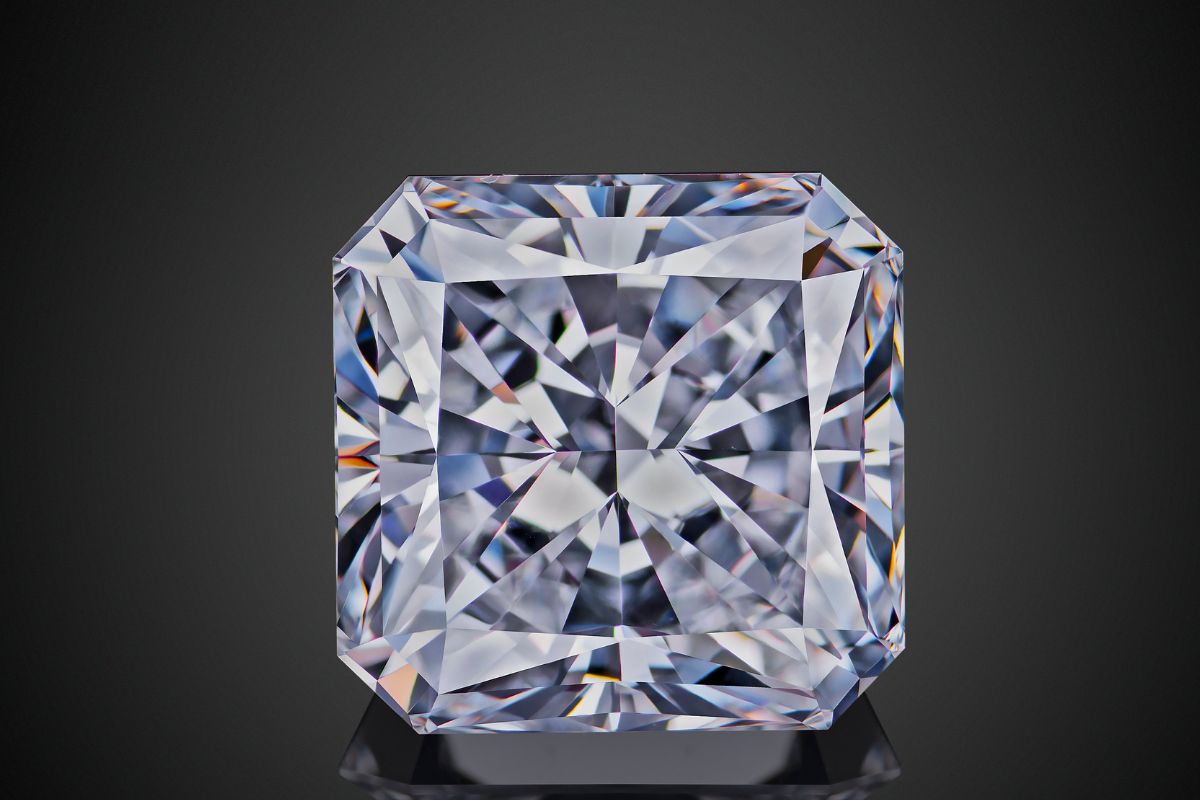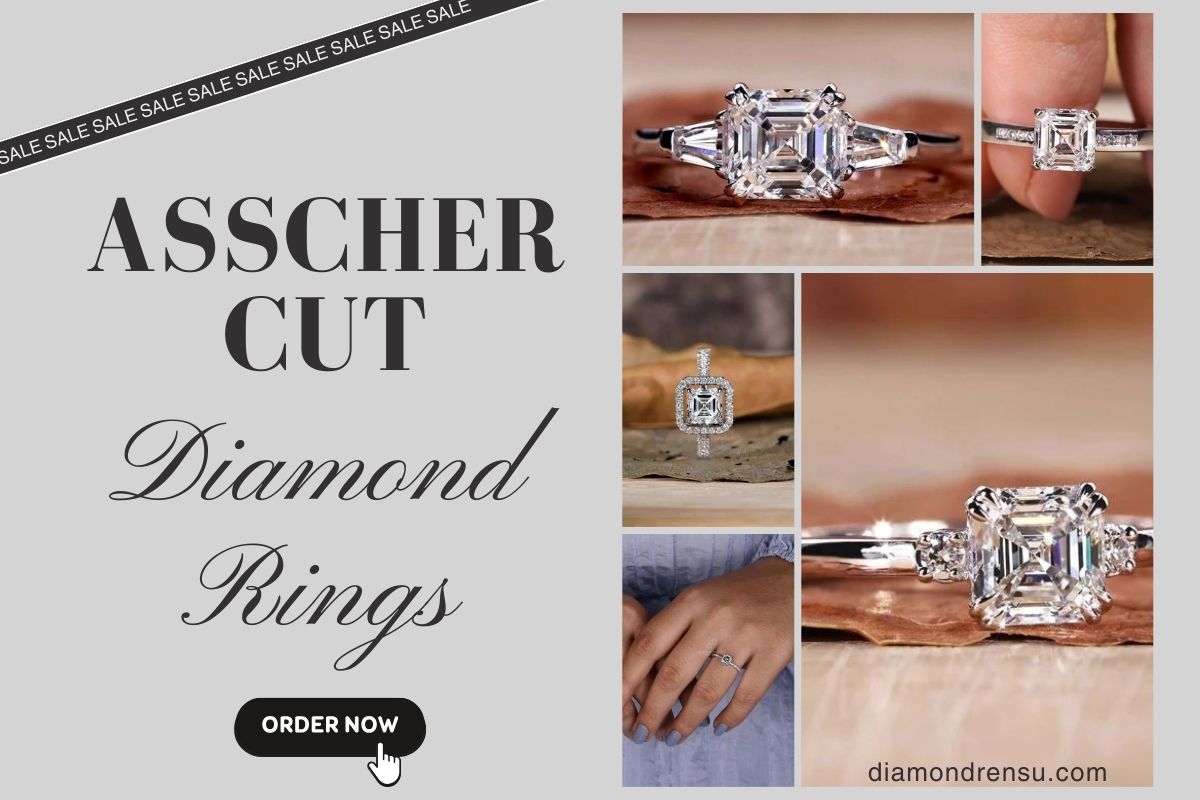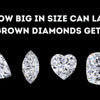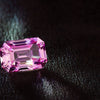
Asscher Cut Diamonds: The Ultimate Guide to Timeless Elegance
Asscher cut diamonds are a unique and sophisticated choice cherished for their distinctive appearance—a symphony of stepped facets and a deep, captivating allure. Developed in 1902 by Joseph Asscher of the renowned Asscher Diamond Company, this cut was at the forefront of early 20th-century elegance. Its hallmarks include a squarish shape with cropped corners that combine the geometries of a square and an octagon, allowing a deep view into the diamond, akin to a mesmerizing endless hallway lined with mirrors.
Your interest in Asscher cut diamonds may stem from their vintage charm and connection to Art Deco design, which surged in popularity during the 1920s. This cut's ability to highlight the clarity of a diamond makes it a coveted option for those seeking a stone with an antique vibe yet a modern brightness. The original Asscher cut was renowned for its 'hall of mirrors' effect, an enchanting feature that remains a beloved aspect in today's variants.
In recent years, the Asscher cut has experienced a revival, with the introduction of the Royal Asscher cut—a modern iteration that enhances the original design with additional facets. This cut provides even more brilliance and is protected by patents to keep its design exclusive. Whether set in a simple solitaire or a more elaborate, vintage-inspired setting, an Asscher cut diamond is both a statement of luxury and a nod to the time-honored traditions of diamond cutting.
History of Asscher Cut Diamonds
As you explore the fascinating world of diamonds, the Asscher cut stands out with its unique blend of rich history and geometric elegance. Here, you'll discover how it evolved from its creation by a master diamond cutter to becoming a patent-protected design and a staple of Art Deco style.
Origins and Joseph Asscher
The Asscher cut diamond emerged in 1902, crafted by Joseph Asscher, a renowned Dutch diamond cutter. This cut was notable for its striking step facets and captivating depth, resembling a square emerald cut with cropped corners, leading to its iconic look. Joseph's craftsmanship gained recognition swiftly, cementing his name in the gemstone's legacy.
The Patent Era and Royal Asscher Cut
In the wake of its creation, the Asscher cut was patented to protect its distinct design. This novelty paved the way for a new tier known as the Royal Asscher cut, increasing the facets from the original and enhancing its brilliance. This innovation coincided with World War I, a tumultuous period, which saw the Asscher family's business survive and preserve their cutting technique.
Art Deco and Asscher Diamonds
During the Art Deco era, the Asscher cut diamond reached its zenith in popularity. With society's embrace of bold lines and symmetrical designs, this diamond cut resonated strongly with the period's aesthetic, becoming a sought-after choice for jewelry. The clean architectural lines of the Asscher cut made it an emblem of the time, capturing the spirit of modernity and luxury.
Asscher Cut Diamond Characteristics

| Property | Asscher Cut Diamond |
|---|---|
| Shape | Square or slightly rectangular with cut corners, resembling an octagon. |
| Facets | Step-cut with cropped corners and a pavilion featuring concentric square facets. |
| Brilliance | Known for a mesmerizing hall-of-mirrors effect with a distinctive X-shaped pattern. |
| Clarity | Due to its large facets, inclusions may be more visible. Higher clarity grades are often preferred. |
| Color | Shows color well, so higher color grades (G and above) are recommended for optimal appearance. |
| Carat Weight | Carat weight is distributed well across the diamond, making it appear larger than other cuts of the same weight. |
| Cut Quality | Cut is crucial for Asscher diamonds; a well-proportioned cut enhances its beauty and brilliance. |
| Setting | Commonly set with four prongs to protect the corners while allowing light to enter the diamond. |
| Popular Ratios | Preferred length-to-width ratios are typically between 1.00 and 1.05 for a square appearance. |
| Origin | The Asscher cut originated in the early 20th century and experienced a resurgence in popularity in recent years. |
When you choose an Asscher cut diamond, you're selecting a gem with a distinctive blend of sparkle, symmetry, and sophistication. This section will guide you through the unique characteristics of the Asscher cut, providing clarity on its structure, faceting, and comparative attributes.
Shape and Structure
The Asscher cut is renowned for its step cuts and square emerald shape, typically with 58 facets that create a mesmerizing pattern. This cut is designed for optimal light performance, boasting deep pavilions and a high crown. The shape is nearly square, but actually an octagon with its corners cropped, giving the stone its unmistakable appearance.
Faceting and Light Performance
Your Asscher cut diamond is crafted to exhibit a "hall of mirrors" effect, thanks to its concentric square patterns. This step cut does not sparkle as much as a round brilliant cut, but rather it offers a subtle and sophisticated scintillation, as it emphasizes the gem’s clarity, with light reflecting off each of its parallel facets.
Comparison with Emerald and Other Cuts
Comparing an Asscher cut diamond to an emerald cut, you'll find they share a similar step-cut faceting style, but the Asscher is more square-shaped and often has a smaller table which can give it more depth. While light performance in step cuts is generally less fiery than in brilliant cuts, the Asscher's unique structure creates a distinctive sparkle that is at once refined and understated.
Quality and Grading

When assessing an Asscher cut diamond, understanding its quality and grading is crucial. The Gemological Institute of America (GIA) sets rigorous standards that determine the value and beauty of such diamonds, focusing on clarity, cut, symmetry, and color.
Understanding Clarity and Inclusions
The clarity of your Asscher cut diamond is a key quality indicator. Clarity grades range from Flawless (FL) to Included (I1, I2, I3), with the former having no inclusions or blemishes visible under 10x magnification. Inclusions are internal characteristics, while blemishes are surface defects. The unique step-cut facets of an Asscher cut may make inclusions more visible, so choosing a higher clarity grade is often beneficial.
- Clarity Grades (Highest to Lowest):
- Flawless (FL)
- Internally Flawless (IF)
- Very, Very Slightly Included (VVS1, VVS2)
- Very Slightly Included (VS1, VS2)
- Slightly Included (SI1, SI2)
- Included (I1, I2, I3)
Importance of Cut and Symmetry
The cut grade of your Asscher diamond greatly influences its brilliance. A well-cut Asscher diamond has a deep pavilion and a high crown that work together to reflect light beautifully. Symmetry is also crucial; it refers to the precision of the diamond's shape and the arrangement of its facets. High symmetry ensures that light is properly reflected within the diamond, contributing to a more sparkling appearance.
- Cut Quality Indicators:
- Brilliance (light reflected from a diamond)
- Fire (flashes of color)
- Scintillation (sparkle when the diamond or light source moves)
Color Grading and Impact
Color grading is another significant aspect of your diamond's quality. GIA's color grade scale starts with D (colorless) and goes down to Z (light color). Asscher cuts, with their open table and large step facets, can highlight color, so opting for a higher color grade is typically advised to ensure a whiter appearance.
- Diamond Color Grades (Highest to Lowest):
- Colorless (D, E, F)
- Near Colorless (G, H, I, J)
- Faint Color (K, L, M)
- Very Light Color (N, O, P, Q, R)
- Light Color (S, T, U, V, W, X, Y, Z)
By taking into account these specific grading factors, you can select a top-quality Asscher cut diamond that meets your preferences. Always consider the diamond's GIA certification, which provides an accurate, unbiased assessment of its quality based on the aforementioned characteristics.
Choosing an Asscher Cut Diamond

When selecting an Asscher cut diamond, your focus should be on the interplay between carat weight, price, and how the diamond's unique geometric cut interacts with the chosen setting to maximize its allure.
Carat Weight and Size Considerations
The carat weight of an Asscher cut diamond strongly influences both its physical size and its visual impact. With its step-cut facets and deep pavilion, an Asscher cut typically appears smaller than round cut diamonds of the same weight. When considering an Asscher cut diamond for an engagement ring, it's important to recognize that a one carat Asscher cut might look smaller than expected. However, the cut quality can enhance the stone's presence.
- Under 1 Carat: Ideal for delicate settings.
- 1 Carat and Above: Enhanced boldness in appearance.
Evaluating Price and Value
The price of an Asscher cut diamond is affected by its cut quality as well as its carat weight. Superior cut quality, where the precision of each facet enhances the diamond's clarity and ability to reflect light, adds to the value. The unique attractiveness of Asscher cut diamonds often justifies a higher price tag compared to other cuts with similar weight and clarity, as they exude a vintage charm and a sophisticated appeal.
- Higher Price Point: Equates to superior cut and carat weight.
- Investment Consideration: Reflects rarity and desirability in the market.
Selecting the Right Setting for Asscher Cuts
The setting you choose for your Asscher cut diamond is pivotal in showcasing its distinctive features. A simple engagement ring setting, like a solitaire or a prong setting, allows the diamond to take center stage. Consider a halo setting to amplify size perception. The angular shape of the Asscher cut should fit harmoniously within the setting to achieve a cohesive appearance.
- Solitaire Setting: Emphasizes the Asscher cut's clarity.
- Halo Setting: Creates an illusion of greater size.
By giving careful consideration to the carat weight, assessing the diamond's price and value, and selecting a setting that complements the Asscher cut, you'll ensure that your engagement ring resonates with timeless elegance.
Styling with Asscher Cut Diamonds
The Asscher cut diamond is known for its sophisticated geometry and vintage appeal. It's your timeless gem that bridges past and present with its unique combination of sheer angles and stunning brilliance.
Jewelry Types and Asscher Diamonds
Your choice of jewelry type can accentuate the beauty of Asscher diamonds. Whether you opt for a pair of earrings or a classic engagement ring, the square, stepped facets of Asscher cuts add depth and elegance. These diamonds are often set as solitaire stones to showcase their distinct shape and brilliance. For those inclined towards symmetry, stud earrings or solitaire pendants featuring Asscher diamonds serve as perfect everyday luxury.
- Earrings: Asscher stud earrings, drop earrings
- Rings: Engagement rings, cocktail rings
- Necklaces: Solitaire pendants, geometric designs
Vintage and Modern Combinations
When it comes to styling, the Asscher cut bridges the gap between vintage and modern. The cut itself is a throwback to the Art Deco era, making it a coveted choice for vintage jewelry stores and collectors. Yet, its clean lines allow it to fit seamlessly within a current, modern style. You might find an Asscher cut diamond set in a sleek, contemporary engagement ring or as part of a geometrically inspired necklace, proving its versatility.
Harmonizing with Other Gemstones
Unifying Asscher diamonds with other gemstones can create a mesmerizing effect. The clear lines and symmetry of the Asscher cut make it a fine contrasting companion to colored gems like sapphires or rubies. In a multi-stone piece, position your Asscher diamond centrally to draw the eye, or use it in a repeating pattern to evoke a sense of harmony and elegance.
- Central stones: Asscher diamond flanked by colored gems
- Patterns: Alternating Asscher and round cut stones
Asscher diamonds are as relevant and popular today as they were a century ago. Their timeless charm, when paired with the right jewelry type, a balance of old and new, or a combination of gems, can evoke a style that's distinctly yours.
Caring for Asscher Cut Diamonds

Asscher cut diamonds are renowned for their clarity and unique faceting pattern, which requires regular cleaning and careful handling to maintain their signature sparkle. Proper care ensures that these diamonds retain their polish and continue to captivate with their geometric beauty.
Regular Cleaning and Maintenance
Frequency: Clean your Asscher cut diamond every two weeks to prevent the buildup of skin oils, lotions, and everyday grime that can dull its sparkle.
Cleaning Process:
- Create a solution of warm water and mild dish soap.
- Soak your diamond for 20-30 minutes.
- Use a soft-bristled brush to gently clean the stone, focusing on the area underneath the diamond where dirt commonly accumulates.
- Rinse thoroughly with lukewarm water.
- Dry with a lint-free cloth, being careful not to snag prongs or settings.
Professional Check-Ups: Once a year, take your Asscher cut diamond to a jeweler for a professional cleaning and check-up to ensure settings are secure and the polish is maintained.
Avoiding Damage and Long-Term Care
Asscher cut diamonds, like all diamonds, are durable but not indestructible. To avoid damage:
- Remove your diamond jewelry during physical activities that may expose it to sharp blows.
- Store your Asscher cut diamond in a fabric-lined jewelry box or pouch, away from other pieces to prevent scratches.
- Avoid harsh chemicals, including bleach and abrasives, which can dull or etch the surface of your diamond.
Long-Term Considerations:
- If you notice any damage or loosening in the setting, have it addressed immediately by a professional to prevent loss of the diamond.
- Insure your Asscher cut diamond jewelry to protect against loss, theft, or significant damage.
- Be mindful that over time, wear and tear can affect the diamond's setting and may require attention to ensure the stone remains secure.
Frequently Asked Questions
When considering an Asscher cut diamond, you're engaging with a piece of timeless heritage known for its sophisticated elegance. This section aims to clarify common inquiries regarding this distinctive diamond cut.
How is an Asscher cut diamond different from other diamond cuts?
The Asscher cut is a unique blend of a square shape with deeply trimmed corners, resembling an octagon. Unlike the more common round or princess cuts, it features a stepped square cut which produces a 'hall of mirrors' effect.
What are the distinguishing characteristics of an Asscher cut diamond?
An Asscher cut diamond stands out with its X-shaped facets from its corners to its center culet, and its concentric square patterns when viewed from above. This cut emphasizes clarity over brilliance, providing a vintage allure.
How does the price of Asscher cut diamonds compare to other cuts?
Asscher cut diamonds are often less expensive than round brilliants but can be priced higher than other fancy shapes. The price balances its rarity and demand with the cut's requirement for high clarity stones.
What should one look for when selecting an Asscher cut diamond for an engagement ring?
Look for a high clarity grade, as Asscher cuts do not conceal inclusions well. Ensure the cut is well-proportioned to maximize the unique reflectiveness of the cut which contributes to its visual appeal.
How do the carat size and clarity affect the appearance of an Asscher cut diamond?
Carat size in Asscher cuts doesn't always equate to visual size due to their depth. High clarity is paramount, as it greatly determines the stone’s appearance; the cut tends to display inclusions and color more readily than other cuts.
What are the historical origins of the Asscher cut diamond?
The Asscher cut was developed in 1902 by the Asscher Brothers of Holland. It surged in popularity in the art deco period and has been associated with vintage luxury ever since. The Royal Asscher cut retains a similar heritage with modern enhancements.
Checkout some of our top collections:
Leave a comment
Please note, comments must be approved before they are published.










